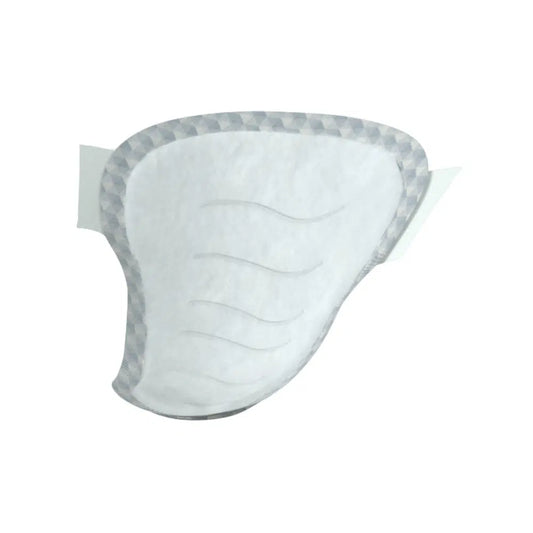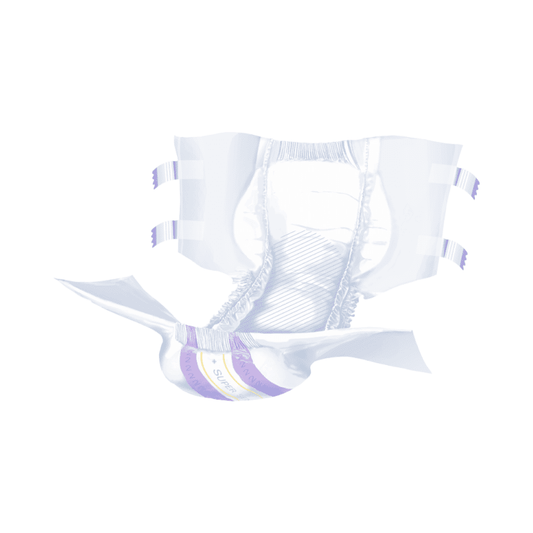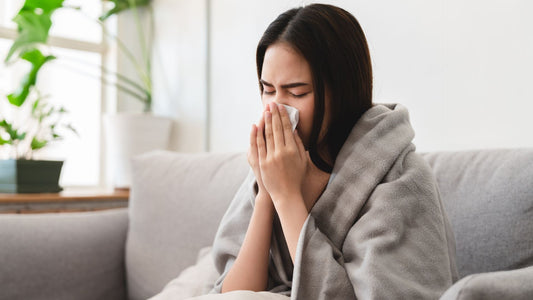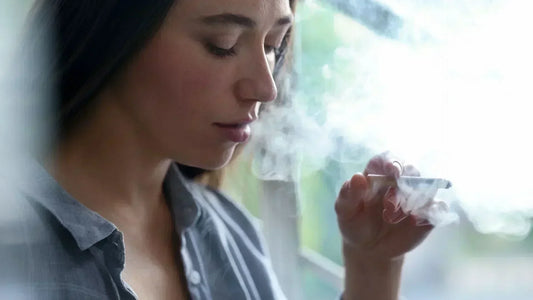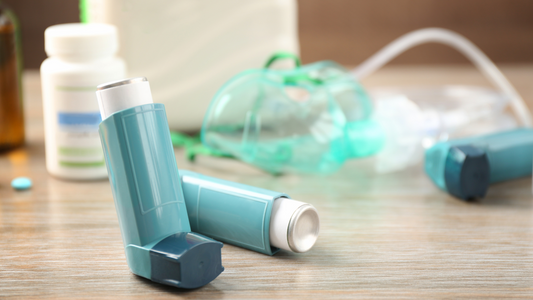
When the brain collapses: stroke and the fight against time

What is a stroke?
A stroke (Apoplex) is an acute cerebrovascular disease, which leads to a sudden interruption of blood supply to part of the brain. This leads to a lack of oxygen, which means that brain cells are irreversibly damaged within a very short time.
Are there different types of a stroke?
Ischemic stroke (approx. 80 % of cases)- Caused by a thrombosis or embolismthat blocks a blood vessel in the brain. It results in a lack of oxygen supply to certain brain regions.
- Is created by the Rip of a blood vessel in the brain, which makes it a Brain hemorrhage Comes that exerts pressure on the surrounding tissue and causes brain damage.
What is a transitory ischemic attack?

Do I have an increased risk of suffering a stroke?
Non -changeable risk factors:
- Old: The risk of a stroke increases with increasing age, especially from the age of 65, since the elasticity of the blood vessels decreases and vascular diseases increase.
- Gender: Men have a higher risk of suffering a stroke in younger years, while women at older age are affected more frequently and have more difficult courses.
- Family preliminary stress: Genetic factors can increase the likelihood of stroke, especially if cardiovascular diseases are already in the family.
Changeable risk factors:
Hypertension (hypertension):- High blood pressure is the most important risk factor for a stroke. Chronically increased blood pressure pollutes the arteries and promotes the development of arteriosclerosis (hardening and narrowing of the arteries), which increases the risk of vascular closures and bleeding in the brain. Early control and drug adjustment of blood pressure can significantly reduce the risk.
- Smoking damages the blood vessels, promotes the development of arteriosclerosis and doubles the risk of stroke. The chemical substances in tobacco smoke lead to a narrowing of the arteries and increase the likelihood that blood clots form.
- Diabetics have a two to four times increased risk of stroke. High blood sugar levels damage the blood vessels and promote the development of arteriosclerosis. This favors vascular narrowing and closures that can lead to ischemic strokes.
- A high cholesterol level, in particular a high LDL cholesterol, promotes the deposition of fat in the blood vessels (plaques). These plaques can narrow the arteries and thus increase the risk of ischemic strokes. You can also loosen and clog a blood vessel in the brain.
- Diseases like Atrial fibrillation, Heart failure or heart valve errors increase the risk of an embolical stroke, since blood clots can form in the heart chambers or atrial stoves that hike into the brain and close vessels there.
- Obesity, especially abdominal fat, is directly related to an increased risk of stroke. It often leads to high blood pressure, diabetes and high cholesterol values. Regular physical activity helps to control the weight and prevent cardiovascular diseases.
- High alcohol consumption can increase blood pressure and increase the risk of hemorrhagic (bleeding -related) strokes. Alcohol also increases the risk of cardiac arrhythmias such as atrial fibrillation, which in turn can lead to an ischemic stroke.
- Chronic stress increases blood pressure and promotes unhealthy behaviors such as smoking or excessive alcohol consumption. This can indirectly increase the risk of stroke.
- A diet that is rich in saturated fats, sugar and salt promotes the development of high blood pressure, high cholesterol levels and overweight. A healthy diet with lots of fruit, vegetables and whole grains can reduce the risk.

Using what symptoms do I recognize a stroke?
The symptoms of a stroke usually occur suddenly and can affect different body functions depending on which part of the brain is affected by the circulatory disorder. A common sign is one one -sided paralysis Or weakness that often affects a half of the body, for example on the face, arm or leg. Those affected can suddenly have difficulty lifting an arm or the face can look asymmetrical, with an angle of mouth hanging down.
Another important symptom are Language and understanding disorders. Many stroke patients have problems speaking or finding words. Others have difficulty understanding what has been said. These communication disorders, also aphasia called, can be extremely stressful and often represent the first alarm signal for a stroke.
In addition Visual disturbances occur, for example the sudden loss of vision on one eye or seeing double images. Also dizziness, Uncertainty when walking or Equilibrium are common symptoms. These neurological failures are an indication that the brain is no longer able to correctly control the movement coordination.
A sudden, strong headache, which is often described as the worst headache, can indicate a hemorrhagic stroke caused by a hemorrhage. In some cases, this headache is associated with nausea and loss of consciousness.

Which multimodal therapy measures are necessary?
The therapy after a stroke is one multilayered and comprehensive processwho both the Acute treatment as well as the Long -term rehabilitation comprises. The aim is to restore as many of the lost functions, to improve the quality of life and to prevent a new stroke. Here are the most important phases and approaches of therapy:
Acute therapy
The Acute phase The stroke treatment begins immediately after the event and focuses on the stabilization of the patient, the minimization of the brain damage and the quick intervention in order to restore blood supply in the brain.
-
Thrombolysis: At a Ischemic stroke (caused by a blood clot), provided the patient within a time window of about 4.5 hours After the start of symptoms comes to the clinic, a clot -resolution medication be administered. This dissolves the blood clot and restores the blood circulation in the brain, which reduces the risk of permanent damage.
-
Mechanical thrombectomy: In the case of particularly severe or large ischemic strokes, the clot can be with a catheter be removed mechanically. This intervention takes place in specialized centers and is particularly effective in large brain vessels.
-
Blood pressure and blood sugar control: Regardless of the stroke type, control of blood pressure and blood sugar levels is crucial. High blood pressure can make stroke worse and poorly set blood sugar increases the risk of complications.
-
Surgical interventions: At a hemorrhagic stroke (caused by bleeding in the brain) can be a operation be necessary to stop the bleeding and reduce pressure on the brain. In some cases, an aneurysm (a weak place in the vessel wall) is surgically repaired to prevent another bleeding.
Early rehabilitation
The Early rehabilitation Often begins in the first days after the stroke as soon as the patient is stabilized. This phase is crucial to minimize permanent damage and to start restoring functions as soon as possible.
-
Physiotherapy: One of the first measures after stabilization is that Movement therapy. Here therapists are working to restore muscle strength, flexibility and coordination. Affected people learn to overcome paralysis (hemiparesis) and reactivate the body. The aim is to mobilize the patient as quickly as possible in order to avoid complications such as thrombosis or pneumonia.
-
Occupational therapy: This therapy helps patients, theirs Everyday skills to win back. This includes activities such as attracting, eating, writing and other basic tasks required for independence. Occupational therapists are targeting the restoration of fine motor skills and hand-eye coordination.
-
Speech therapy: Patients under Language and swallowing disorders (Aphasia and dysphagia) Speech therapy. Speech therapists help the patient to learn to speak, understand, swallow and sometimes also to write and read it.
-
Neuropsychological therapy: In the case of cognitive impairments such as memory loss or poor concentration, special Brain training programs used. These are intended to help the patient to regain cognitive skills and improve independence.
Long -term rehabilitation
After the acute phase and the early rehabilitation, the Long -term rehabilitationthat aims to stabilize the progress and achieve further improvements. This phase can take weeks, months or even years, depending on the severity of the stroke and individual progress.
-
Physiotherapy and occupational therapy are continued to further improve mobility and everyday skills. Regular training is important to minimize permanent restrictions.
-
Language and cognitive rehabilitation: For patients who suffer from persistent language disorders or cognitive deficits, continuous speech therapy and neuropsychological support is crucial. The goal is to help the patient get better in his environment and partially regain lost skills.
-
Psychological care: A stroke also has considerable emotional and psychological Effects. Many patients suffer from depression, fears or emotional instability. Psychotherapy or psychological advice can help to deal with these challenges.
Long -term aftercare and prevention
Aftercare after a stroke is crucial to reduce the risk of a new stroke. A stroke is often an indication of existing health problems that have to be monitored and treated in the long term.
-
Drug treatment: To prevent another stroke, many patients receive Blood -thinning medication (Anticoagulants or platelet aggregation inhibitors) that reduce the risk of the formation of blood clots. In patients with high cholesterol, one is often Cholesterol (Statin) prescribed. Blood pressure -lowering medication are a lifelong element of therapy for most stroke patients.
-
Check risk factors: A strict control of the Blood pressure values, the Blood sugar (with diabetics) and the Cholesterol is essential to minimize the risk of a new stroke.
-
Lifestyle changes: It is strongly recommended to maintain a healthy lifestyle. This includes a balanced, low -fat diet, regular physical activity and avoiding smoking. The reduction in alcohol consumption also contributes to stroke prevention.
Adjustments to the living environment
Many stroke patients have to adapt their living environment to their new needs in the long term. This can be the installation of barrier -free entrances, Handle, Wheelchair ramps And other aids include to promote independence and reduce the risk of falls.
-
Support from nursing services: Some patients need long -term support from outpatient care services or by relatives who are involved in care.
-
Self -help groups: The exchange with other affected people can give both the patient and the caring relatives emotional hold and make it easier to deal with the new life situation.
What long -term consequences are possible through a stroke?

Physical consequences
- Paralysis and movement disorders: Most often half side paralysis (hemiparesis) occur, in which a half of the body is affected. Fine motor skills and coordination are often limited.
- Swallowing disorders (dysphagia): Many patients have difficulty swallowing, which increases the risk of aspiration (swallowing food into the trachea) and associated pneumonia.
- Spastics: Cramps of the muscles can occur, make movements more difficult and cause pain.
- Incontinence: Many stroke patients suffer from bladder or intestinal art.
Cognitive consequences
- Memory problems: This is often affected by short -term memory and the ability to process new information.
- Concentration disorders: Those affected have difficulty concentrating on a task for a long time.
- Planning difficulties: The ability to organize actions and make decisions can be impaired (executive functions).
- Spatial perception disorders: Problems with spatial orientation are common, especially in the case of strokes in the right brain area.
Language and communication disorders
- aphasia: Problems with speaking, understanding, writing or reading caused by damage to the language center.
- Dysarthria: Speech disorders that occur through a weakness of the facial muscles, so that the pronunciation becomes indistinct.
Emotional and psychological consequences
- Depression: Many stroke patients develop depression, often in response to the loss of their skills and the dependence on others.
- Fears: Fears and concerns about a new stroke are common.
- Emotional instability: Those affected can suffer from strong irritability or sudden mood swings.
Social consequences and need for care
- Need for care: Around 40 % of stroke patients are in need of care after the event, about a third requires permanent support in everyday life. This can range from slight support to intensive care.
- Restrictions on independence: Many patients are severely restricted in their independence regarding mobility, communication and everyday activities. The participation in social life and social participation are significantly limited.
- Disability: A significant part of those affected cannot return to work after a stroke. Patients remain in the long term in the long term, and are often forced to obtain disability pension, which can lead to financial and emotional stress, as well as a social descent.
Rehabilitation needs
- Physiotherapy: To restore mobility and muscle strength.
- Occupational therapy: Helps with coping with everyday tasks and improving motor skills.
- Speech therapy: For patients with language or speech disorders.
- psychotherapy: Supports in the processing of emotional and psychological consequences.
Long -term forecast
The Serious and duration of the consequences depend heavily on how quickly the stroke is recognized and treated, as well as the intensity of rehabilitation. Some patients can almost completely recover while other permanent disabilities have.
Statistics on the need for care
- Approximately 40 % of the stroke survivors are in need of care after the event.
- Approximately 30 % need permanent care Or support in everyday life, be it through relatives or professional care services, the topic Incontinence And nursing needs play a significant role in everyday life

What changes are accompanied by the disease that are not discussed socially?
A stroke not only leads to drastic changes for those affected, but also has profound effects on the life of the relatives. These changes particularly affect the Role distribution in the family, the partnership, the sexuality and that emotional balance within the relationships. Here are the most important changes that relatives experience, but which are hardly spoken about. This has a profound causes: On the one hand, financial or sexual aspects are connected to shame and stigma in our society, and on the other hand, families do not want to carry their internal family tensions outside. After all, we are constantly wondering what the others think of us. We are now addressing the things that you may not dare. Because we stand for open communication.
Role distribution in the family
- Takeover: Relatives, especially partners or children, often have to be the role of Caregiver take over. This means that they are responsible for the physical and emotional support of the stroke patient. Tasks that were previously shared are now taken over by a person, which significantly changes the everyday life of the individual. This often puts your own needs back.
- Loss of equality: The partnership or parent-child relationship is often unbalanced. A partner who previously acted equally in the relationship is now cultivated by the other partner, which leads to a new, often asymmetrical role distribution.
- Pressure: Family members who take care of care often experience a high Pressure. You have to make decisions about medical care, rehabilitation and care, which can lead to stress and overwhelming.
Change in partnership
- Shifting the relationship: The stroke leads to one Shifting in the partnership, since the former equal partner may now rely on extensive care. This can lead to a loss of earlier dynamics and new emotional tensions.
- Change of roles: A partner who is now as Nurse sees, can have the feeling that the earlier partnership and the associated emotionalities are lost. The loss of the romantic relationship in favor of a nursing role can weaken or change emotional binding.
- Emotional stress: The healthy partner often has to Frustration, grief And deal with a feeling of overwhelming because the relationship structure changes. At the same time, he has to support the partner who also deals with the new reality.
sexuality
- Change of intimacy: Strokes often lead Changes in sexuality. Physical restrictions, paralysis and the changed body feeling of the patient can lead to sexual needs take a back seat. Patients often feel less attractive or are ashamed of their restrictions, which affects sexual closeness. In addition, visibly ill people are often considered less attractive and sexually attractive. It is difficult for many relatives to pronounce this.
- Uncertainty and reluctance: The nourishing partner can feel unsafe how he should encounter the affected partner in terms of sexuality and intimacy. The nursing tasks can be one romantic relationship Sprumping, which makes access to an active sex life difficult. Therefore, there is often an imbalance within the different needs of a partnership.
- Emotional withdrawal: Some couples experience one emotional withdrawal Regarding sexuality, since the need for care sets different priorities and the feeling of intimacy is pushing into the background. What results from this? Stressing thoughts and needs are inadequately to be communicated.
Mental stress of relatives
- Overwhelming and stress: Relatives who take care of the care are often with emotional overwhelming confronted. You have to take care of the care of the stroke patient and at the same time cope with your own everyday life. This double burden often leads to exhaustion And even to the Burnout. To ask for help and support from the Freundeskreis or to look for self -help clubs is difficult for many. But they are not alone - an exchange with like -minded people can also create relief.
- Feeling of isolation: Many caring relatives feel their job isolatedBecause the social circle is reduced or you have no time for your own social contacts. This can severely affect emotional well -being.
- Feelings of guilt: Relatives often feel Feelings of guilt, if you think not to do enough for the person concerned or to neglect your own needs. These feelings of guilt can further burden the emotional bond with the person concerned.
Financial burden
- Professional changes: Often relatives who take care of care have to reduce their working hours or give up their professional career completely, what to do Financial losses leads. This can lead to additional tensions within the family, especially if the stroke patient also loses its ability to work.
- Nursing costs: The costs for additional nurses, aids and therapeutic measures provide another financial burden the adaptation of the living space (e.g. barrier -free living) can also cause high costs.
Social isolation
- Loss of leisure: Relatives often lose a large part of their Leisure time And personal freedom, since care requires a lot of time and energy. Hobbies, social meetings or vacation plans are pushed in the background or completely abandoned, because after all, caring relatives ask themselves to function - only unfortunately they forget themselves. Also remember that your relatives of dependent relatives certainly do not want you to take yourself on the short leash. Her own emotional tensions also pass to the patient.
- loneliness: The withdrawal from social life can be too loneliness and lead emotional isolation. Many caring relatives feel left alone because friends and acquaintances cannot understand the stress or the contact with others breaks off.
Can I prevent a stroke?
Yes, a stroke can be done in many cases by targeted Prevention measures be prevented, especially if the Risk factors be recognized and controlled early. Many of the main causes of strokes are related to lifestyle- and Health factorsthat can be influenced. Here are some of the most important measures for stroke prevention:
| Prevention measure | Justification | What you can do |
|---|---|---|
| Check and treat blood pressure | Hypertension (hypertension) is the most important risk factor for a stroke because it contains the blood vessels and damages its walls, which leads to arteriosclerosis and the narrowing of blood vessels. This increases the risk of vascular closures or cracks. | Regular blood pressure measurements and, if necessary, blood pressure -lowering medication. Reduce salt consumption because salt can increase blood pressure. A target blood pressure of less than 140/90 mmHg is often recommended. |
| Healthy eating | A balanced diet can reduce the risk of high blood pressure, high cholesterol and overweight - all factors that favor strokes. A low -fat, fiber -rich diet with lots of fruit, vegetables and whole grain products keeps the blood vessels healthy and reduces arteriosclerotic deposits. | Reduce saturated fats and cholesterol because these deposits promote in the arteries. Increase the consumption of omega-3 fatty acids (in fish), which have an anti-inflammatory effect and can improve blood lipid levels. |
| Physical activity | Regular movement lowers the risk of strokes by keeping blood pressure, cholesterol and weight under control. Sport also improves vascular function, promotes blood circulation and strengthens the cardiovascular system. | Strive for at least 150 minutes of moderate physical activity per week (e.g. walking fast, cycling, swimming). Daily walks or climbing stairs can also significantly reduce the risk of stroke. |
| Smoke stop | Smoking promotes the formation of arteriosclerosis (narrowing and hardening of the arteries) and increases the risk of blood clots. The chemicals contained in tobacco damage the blood vessels and increase blood pressure. | If you smoke, you should stop. After a year after the smoke stop, the risk of stroke is significantly reduced. Support from programs for smoking cessation, nicotine replacement therapies or medical advice can be helpful. |
| Keep an eye on weight and blood sugar | Obesity, especially visceral fat (fat around the abdominal organs), is closely related to high blood pressure, diabetes and increased cholesterol levels. Diabetes mellitus damages the blood vessels and favors the development of strokes. | Losing weight if necessary, by combining healthy nutrition and regular exercise. A moderate weight loss of 5-10 % can significantly improve blood pressure and blood sugar. If you are diabetics, close blood sugar control is essential to minimize the risk of stroke. |
| Reduce alcohol consumption | Excessive alcohol consumption increases blood pressure and can lead to cardiac arrhythmias that increase the risk of ischemic stroke. He also damages the liver and promotes arterial inflammation. | Limit alcohol consumption to moderate quantities. For men, it is recommended not to consume more than two alcoholic beverages a day, for women nothing more than a drink. |
| Stress management | Chronic stress can increase blood pressure and lead to unhealthy habits such as smoking, excessive alcohol consumption or unhealthy nutrition. These factors together increase the risk of stroke. | Develop techniques for coping with stress such as meditation, yoga, breathing exercises or regular breaks in everyday life. The exchange with friends or the support of psychological advice can also help. |
| Regular health controls | Many of the risk factors for stroke such as high blood pressure, high cholesterol or diabetes often remain undetected because they do not cause immediate symptoms. Regular preventive examinations help to recognize and treat these factors at an early stage. | Have your blood pressure, blood sugar and cholesterol values checked regularly. This is particularly important if you are over 40 years old or already have risk factors. |
 The stroke remains one of the most common health risks in Germany, but we all have the opportunity to actively reduce our risk. Prevention begins with ourselves: A healthy lifestyle - through a balanced diet, regular exercise and the absence of smoking - can significantly reduce the risk of stroke. Awareness of risk factors such as high blood pressure, diabetes and stress is also crucial.
The stroke remains one of the most common health risks in Germany, but we all have the opportunity to actively reduce our risk. Prevention begins with ourselves: A healthy lifestyle - through a balanced diet, regular exercise and the absence of smoking - can significantly reduce the risk of stroke. Awareness of risk factors such as high blood pressure, diabetes and stress is also crucial.
The responsibility lies in our own hands to make our lives positively and to promote long -term health. A lifestyle change is not a victim, but an investment in our future. By paying attention and actively providing our health, we not only protect ourselves, but also relieve the health system. Let's ensure a more health -conscious Germany together - every little step counts.







